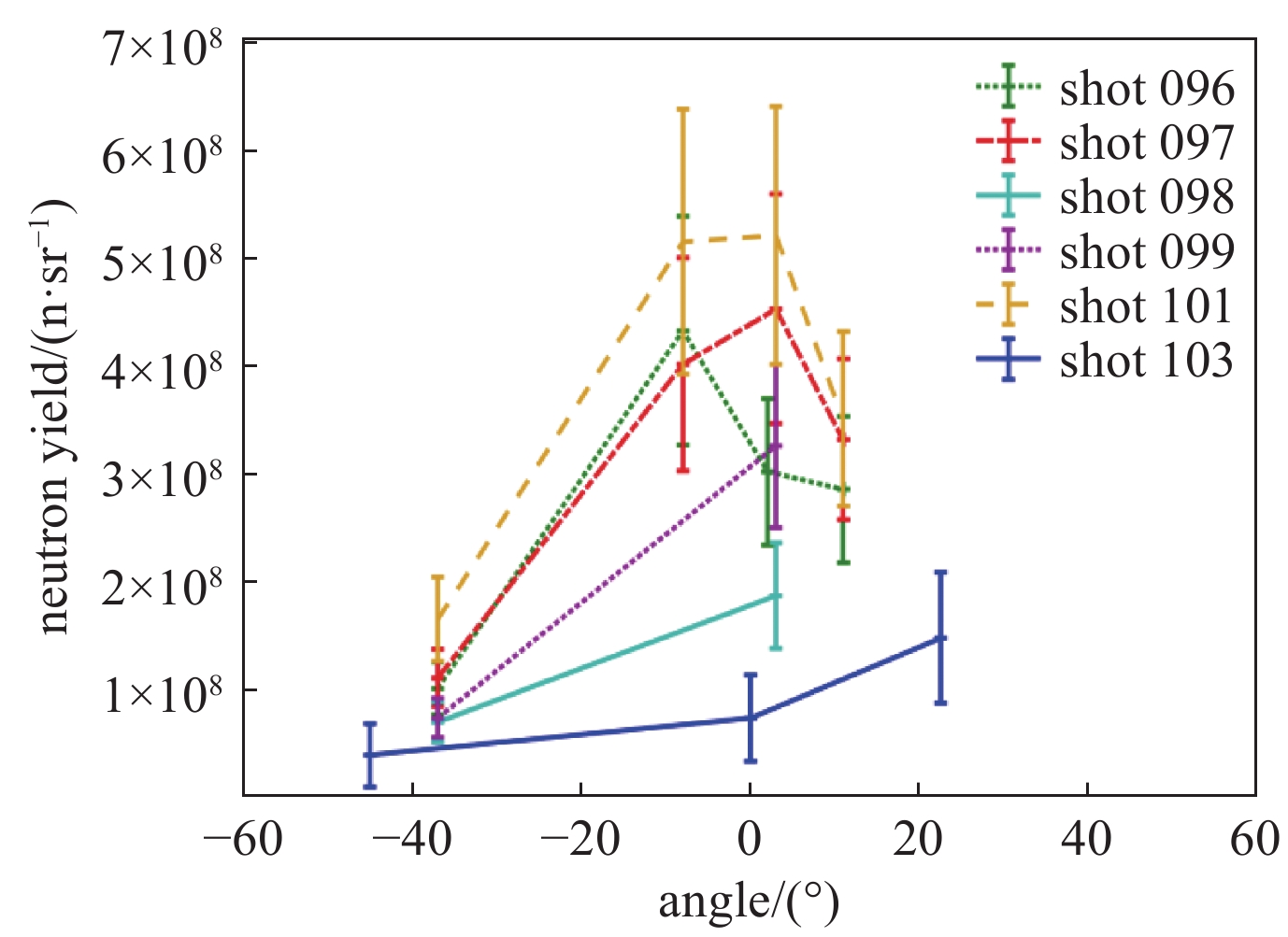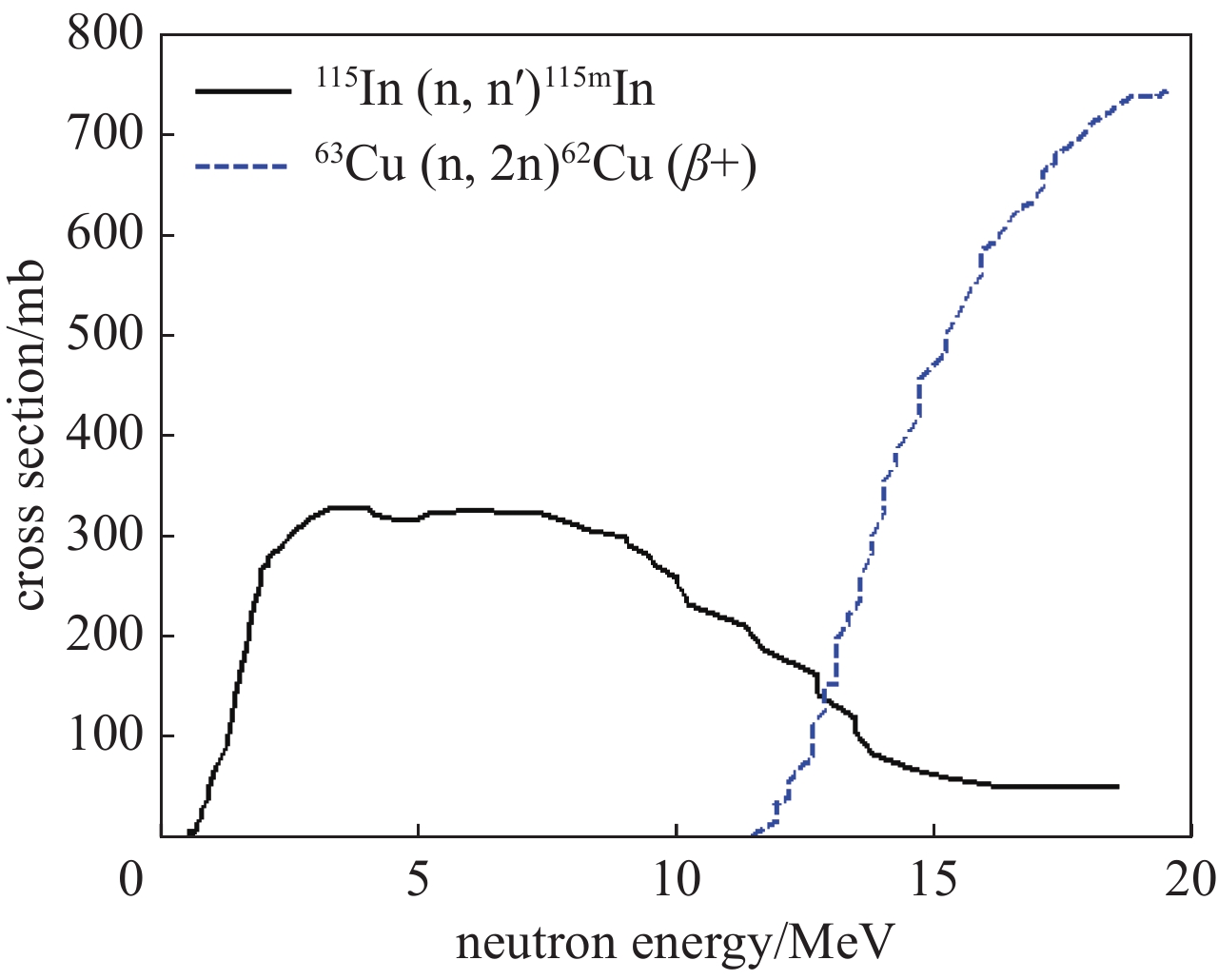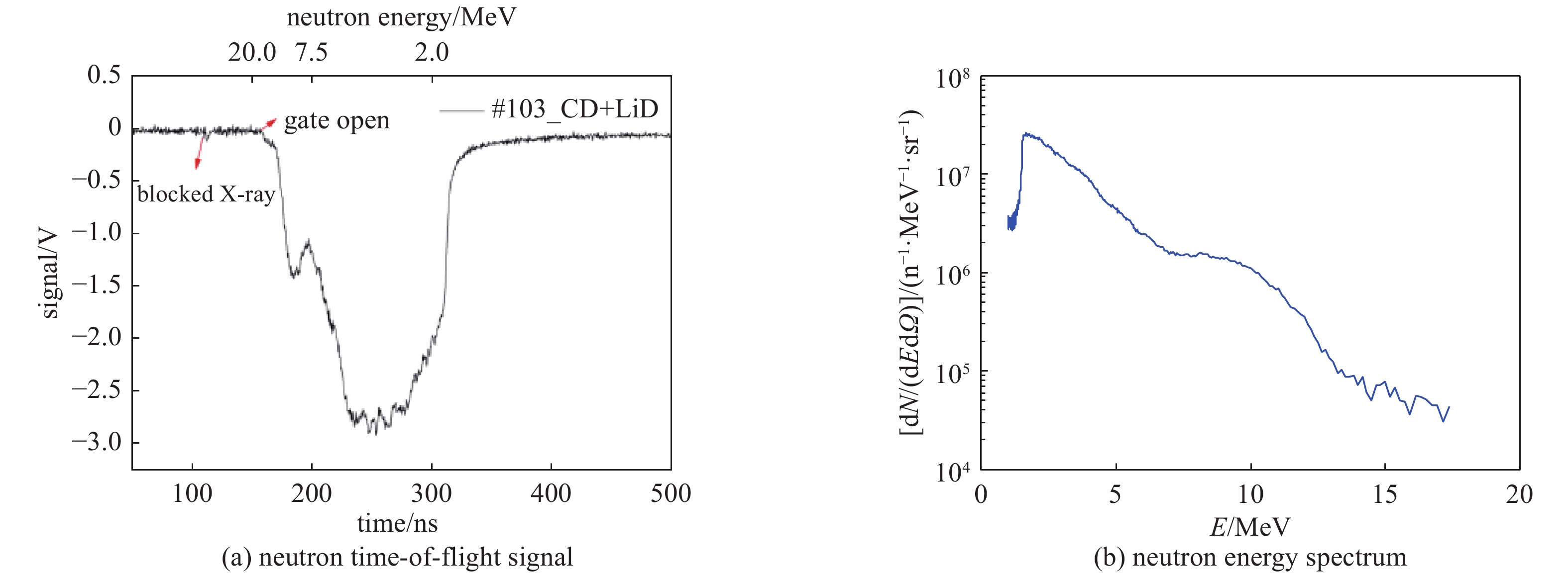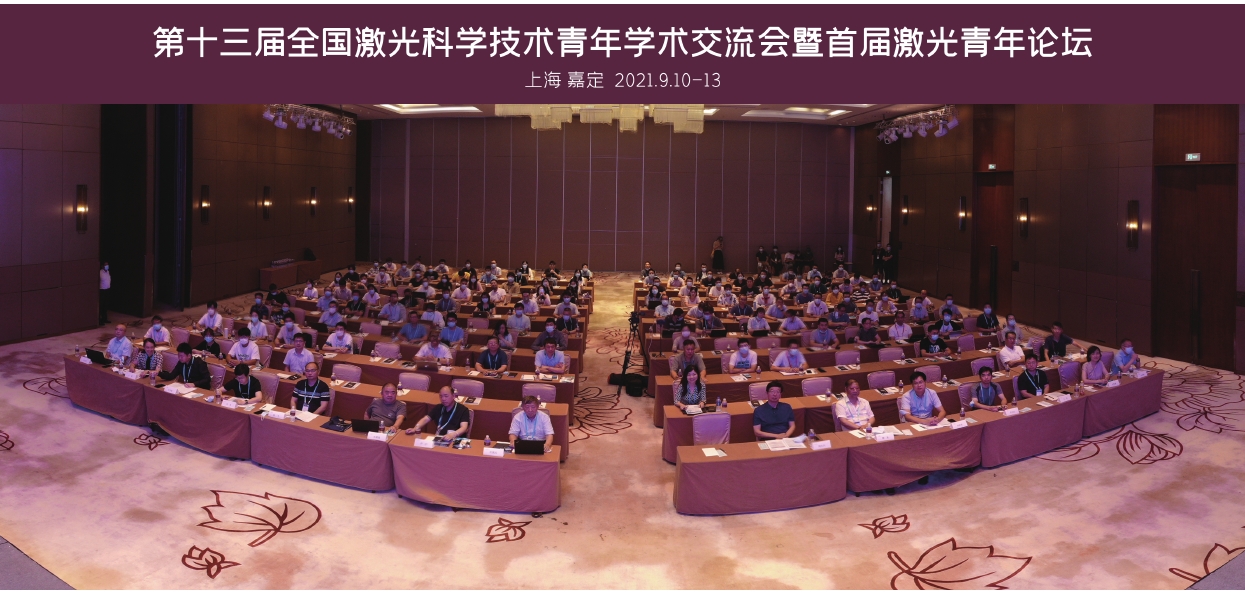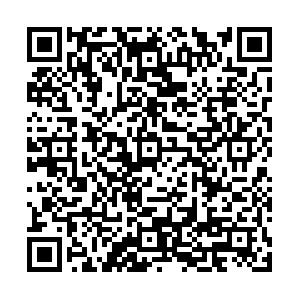Experimental study of high yield neutron source based on multi reaction channels
-
摘要: 基于超短超强激光的短脉冲中子源是实现超快中子探测的理想中子源。如何提升中子产额是目前短脉冲激光中子源实现应用需求亟需解决的关键问题。提出基于靶背鞘场加速机制和束靶反应方案,采用LiD复合组分靶作为中子转换体,可以有效提升激光中子产额。与常规的LiF转换体相比,除了p-Li和d-Li两个反应道之外,LiD转换体可以多出p-D和d-D两个反应道,因此可充分利用激光加速的质子和氘离子的多反应通道优势来提升中子产生概率。实验结果表明,相比于LiF转换体,LiD转换体可带来中子产额2~3倍的提升,达到5.2×108 n/sr的最高中子产额,并具备更好的前冲性。实验还区分了多反应通道的贡献,证明中子产额提升主要来自于p-D反应。Abstract: The short-pulse neutron source based on ultra-short and ultra-intense laser is an ideal neutron source for ultra-fast neutron detection. For many applications of the novel laser neutron source, the neutron yield now becomes a major limitation. It is proposed here that, based on the Target Normal Sheath Acceleration mechanism (TNSA) and the beam-target reaction scheme, the adoption of composite component target LiD as the neutron converter can be an effective path to enhance the neutron yield. Compared with the traditional LiF converter, which has two typical reaction channels p-Li and d-Li, the use of LiD converter has the advantages on introducing two more reactions channels, i.e., p-D and d-D. Therefore, more reaction channels are expected to be beneficial for increasing the neutron yield. It is experimentally demonstrated that by using LiD converter, an enhancement of 2−3 folds of neutron yield is achieved compared with the LiF converter. As a result, a neutron beam with the highest yield of 5.2×108 sr−1 with a forward beamed distribution is well obtained. The contribution of multi reaction channels is also identified, indicating the enhancement of neutron yield mainly comes from the p-D reaction.
-
Key words:
- laser pulse neutron source /
- neutron yield /
- neutron converter /
- multi reaction channels
-
图 4 p-D和d-D反应截面[17]
Figure 4. Cross section of p-D and d-D
图 5 铟和铜的中子活化反应截面[17]
Figure 5. Neutron activation cross section of In and Cu
表 1 气泡探测器测量的中子产额
Table 1. Neutron yield diagnosed by bubble detector
shot target neutron yield/sr−1 #96 Cu-CD+LiD (3.0±0.7)×108 #97 Cu-CD+LiD (4.5±1.1)×108 #98 Cu-CD+LiF (1.9±0.5)×108 #99 Cu+LiD (3.3±0.7)×108 #101 Cu-CD+LiD (5.2±1.1)×108 #103 Cu-CD+LiF (1.5±0.6)×108 表 2 铟活化、铜活化中子产额测量结果
Table 2. Neutron yield diagnosed by In activation and Cu activation
shot target In activation/sr−1 Cu activation/sr−1 #96 Cu-CD+LiD 1.2×108 9.6×107 #97 Cu-CD+LiD 1.4×108 2.8×107 #98 Cu-CD+LiF 3.7×107 7.5×106 #99 Cu+LiD 8.7×107 4.9×106 #101 Cu-CD+LiD 1.5×108 8.9×106 #103 Cu-CD+LiF 3.9×107 2.7×107 -
[1] Snavely R A, Key M H, Hatchett S P, et al. Intense high-energy proton beams from petawatt-laser irradiation of solids[J]. Physical Review Letters, 2000, 85(14): 2945-2948. doi: 10.1103/PhysRevLett.85.2945 [2] Pomerantz I, McCary E, Meadows A R, et al. Ultrashort pulsed neutron source[J]. Physical Review Letters, 2014, 113: 184801. doi: 10.1103/PhysRevLett.113.184801 [3] Roth M, Jung D, Falk K, et al. Physics: a tabletop neutron source[J]. Nature, 2013, 494: 044802. [4] Jung D, Falk K, Guler N, et al. Characterization of a novel, short pulse laser-driven neutron source[J]. Physics of Plasmas, 2013, 20: 056706. doi: 10.1063/1.4804640 [5] Favalli A, Aymond F, Bridgewater J S, et al. Nuclear material detection by one-short-pulse-laser-driven neutron source[C]//IEEE Nuclear Symposium. Seattle, 2015. [6] Guler N, Volegov P, Favalli A, et al. Neutron imaging with the short-pulse laser driven neutron source at the Trident laser facility[J]. Journal of Applied Physics, 2016, 120: 154901. doi: 10.1063/1.4964248 [7] Fernandez J C, Barnes C W, Mocko M J, et al. Sensitivity analysis and requirements for temporally and spatially resolved thermometry using neutron resonance spectroscopy[R]. LA-UR-18-20686, 2018. [8] Lancaster K L, Karsch S, Habara H, et al. Characterization of 7Li(p, n)7Be neutron yields from laser produced ion beams for fast neutron radiography[J]. Physics of Plasmas, 2004, 11(7): 3404-3408. doi: 10.1063/1.1756911 [9] Kleinschmidt A, Bagnoud V, Deppert O, et al. Intense, directed neutron beams from a laser-driven neutron source at PHELIX[J]. Physics of Plasmas, 2018, 25: 053101. doi: 10.1063/1.5006613 [10] 吴学志, 寿寅任, 弓正, 等. 激光离子加速研究与应用展望[J]. 强激光与粒子束, 2020, 32:092002. (Wu Xuezhi, Shou Yinren, Gong Zheng, et al. Laser-driven ion acceleration: development and potential applications[J]. High Power Laser and Particle Beams, 2020, 32: 092002 [11] Zulick C, Dollar F, Chvykov V, et al. Energetic neutron beams generated from femtosecond laser plasma interactions[J]. Applied Physics Letters, 2013, 102: 124101. doi: 10.1063/1.4795723 [12] Willingale L, Petrov G M, Maksimchuk A, et al. Comparison of bulk and pitcher-catcher targets for laser-driven neutron production[J]. Physics of Plasmas, 2011, 18: 083106. doi: 10.1063/1.3624769 [13] 崔波, 贺书凯, 刘红杰, 等. 液体闪烁体探测器测量皮秒激光脉冲中子源能谱[J]. 强激光与粒子束, 2016, 28:124005. (Cui Bo, He Shukai, Liu Hongjie, et al. Neutron spectrum measurement for picosecond laser pulse neutron source experiment with liquid scintillator detector[J]. High Power Laser and Particle Beams, 2016, 28: 124005 doi: 10.11884/HPLPB201628.160414 [14] Olsher R H, McLean T D, Mallett M W, et al. High-energy response of passive dosemeters in use at LANL[J]. Radiation Protection Dosimetry, 2007, 126(1/4): 326-332. [15] Bubble Technology Industries Inc[EB/OL]. http://bubbletech.ca/. [16] https://www-nds.iaea.org/exfor/servlet/ [17] Petrov G M, Higginson D P, Davis J, et al. Generation of high-energy (>15 MeV) neutrons using short pulse high intensity lasers[J]. Physics of Plasmas, 2012, 19: 093106. doi: 10.1063/1.4751460 [18] Cui Bo, Fang Zhiheng, Dai Zenghai, et al. Nuclear diagnosis of the fuel areal density for direct-drive deuterium fuel implosion at the Shenguang-II Upgrade laser facility[J]. Laser and Particle Beams, 2018, 36(4): 494-501. doi: 10.1017/S026303461800054X -





 下载:
下载:

